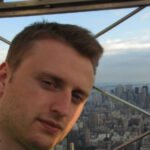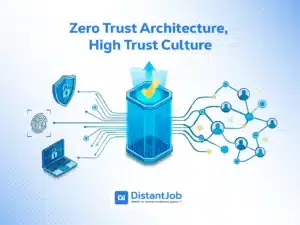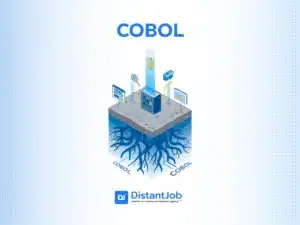Cloud engineers make expensive on-premise gear accessible, flexible, and consumption-based with services like AWS, Azure, and Google Cloud Platform. They design, build, secure, and optimize cloud infrastructure so applications run reliably at scale.
But to be a truly great cloud engineer, one must have development skills, such as expertise in Linux, networking, at least one major cloud platform, CI/CD automation, containers such as Docker and Kubernetes, and cost optimization.
Essential Skills for Cloud Engineers
To be a truly great cloud engineer requires a comprehensive skill set that spans traditional IT operations and modern cloud-native technologies:
- Expertise in major cloud services (AWS, Azure, Google Cloud)
- Deep understanding of at least one major cloud platform
- Core networking concepts (IP configuration, virtual private networks)
- Linux/Windows system administration environments
- Infrastructure design and optimization
- Automation languages (Python, shell scripting)
- CI/CD automation pipelines
- Infrastructure as Code practices
- Data management technologies (relational and non-relational databases)
- Container technologies (Docker & Kubernetes)
- Orchestration and scaling strategies
- Cost optimization and financial operations
- Security and compliance management
- Performance monitoring and troubleshooting
1. Core Cloud Infrastructure Skills : AWS, Azure, and GCP
Today’s cloud engineers need to build secure networks across multiple regions, find ways to automate as many services as possible in code, have solutions run in a way that’s highly measurable, and accomplish all of this while maintaining a reasonable budget.
Here are the proficiencies cloud engineers must have while dealing with infrastructure. It’s basically building the infrastructure inside the cloud, planning for its scalability and monitoring performance to ensure everything runs smoothly. There’s more to the cloud-native world than “just” creating a virtual machine.
Virtual Networking & VPC Design
Cloud engineers should be skilled in designing high‑availability VPCs/VNets with non‑overlapping CIDR ranges, placing subnets across multiple AZs/regions, protecting traffic with managed firewalls such as AWS Network Firewall or Azure Firewall, and keeping visibility high by enabling VPC Flow Logs and Network Access Analyzer while reserving address space up front to avoid future conflicts.
Object Storage, CDN & Life‑Cycle Policies
Cloud engineers must be able to architect storage classes and policies that move cold data to cheaper tiers automatically.
Infrastructure as Code (IaC)
IaC means to build an IT infrastructure inside the cloud. Using the correct scripts, a few clicks will be enough to set and manage everything. Hardware, software, databases, developer tools, and even configurations that would be done manually… The cloud computing services mimic everything as set by the cloud engineer. Engineers should demonstrate module reuse, remote state, and policy‑as‑code skills.
In case of a disaster, the cloud engineer must have the skills to rebuild the former IaC again quickly and efficiently, preventing further loss.
Scalability Planning
A cloud engineer must plan for such scale-up plans and build the virtual infrastructure that handles the stress. Not only because more people may join in, but many people may join from different locations! Preferentially, the engineer will do it without rebuilding the whole system from scratch.
This involves using auto-scaling groups, load balancers, and stateless architecture. For example, a cloud engineer might configure load balancing and other auto-scaling rules. During a seasonal traffic spike, new server instances spin up automatically to keep response times low. After the stress peak, the system scales down automatically to minimize costs.
Performance Optimization
Cloud engineers set up monitoring tools to track metrics (CPU usage, memory, latency, and error rates). As soon as something goes wrong, they are notified and the issue is addressed.
As a Cloud engineer, you may use many tools to monitor performance. Some examples are Amazon CloudWatch for AWS, Azure Monitor for Azure, and Google Cloud Observability for GCP. You may use them alongside third-party solutions like Datadog and New Relic. With these tools, you adjust instance types, database configurations based on usage patterns, or implement caching and content delivery networks to improve response times.
2. Programming + DevOps Automation Skills for Cloud Engineers
A cloud engineer has to know how to develop software. While cloud engineering is busy with infrastructure and security in the cloud, the engineer eventually has to automate processes. Cloud management never ceases, so he has to integrate new code, test it, and deploy it continuously.
1. CI/CD Pipeline Automation
A cloud is a dynamic environment with an eternal thirst for optimization, security is a constant responsibility. Therefore, a cloud engineer can’t simply set up a bunch of virtual machines, leaving the company at its own peril.
Cloud engineers have to constantly integrate optimization and new features (via code). For this purpose, Continuous Integration and Continuous Deployment (CI/CD) pipelines automate the cloud’s processes. They streamline all the builds, tests, and deployment processes.
For example, a mid-level engineer may have a Jenkins or GitLab pipeline. In that pipeline, there is a container with an application on it. They may send it to a cloud registry (to “save” it as it is now). Then they set up many tests and changes, like bug testing or changing the firewall. That is how they test how safe (or unsafe) the application is.
It sounds like a heck of a job, but a good cloud engineer makes it automated, incorporating rollback mechanisms. In that way, deployment is faster and safer.
2. Cloud-Native Development (Microservices & Containers)
Cloud-native development is the ability to develop software suited for the cloud. It requires four skills:
- Basic Development Competences: AWS, Azure, Google Cloud, and other tools like Kubernetes, Terraform, etc. Also, be familiar with microservices (breaking applications into smaller services), containers (boxes that contain an application “frozen in time”, or as they say, an image)
- DevOps: DevOps is the best framework for cloud engineers. You are the Dev, and the rest of the company is the Ops. In summary, you continuously develop and deploy software, automating most of the processes.
- Automation Knowledge: Repetitive tasks are boring and time-consuming. This is why automating processes is key. Put an application in a container, and test it without worrying about rewriting it or deleting hundreds of lines of code. That is an example of automating tests.
- API Design & Management: You have to connect all these microservices. The best way to do so is by designing an API. An API is a connection between two or more programs or applications, and here, between microservices. A microservice is a mini-app, designed to serve a single function.
Let’s imagine an e-commerce platform. It has a Product Catalog, Shopping Cart, Interface, Payment Processing, etc.. Without a cloud engineer, this software would spam BSoDs as soon as one of these components had too much traffic.
A cloud engineer may decompose the platform into smaller microservices, each one in their own container. They would function separately, communicating with each other via API. If one of them stopped functioning, the others wouldn’t be damaged. Fixing a microservice is also way easier, faster, and cheaper than fixing a whole software system.
3. Cloud Architecture & Design Skills (Scalability, Patterns, Resilience)
Cloud computing architecture is how all elements of the infrastructure synergize with each other (servers, databases, devices, software, networks, etc.).
If the infrastructure is your set of Lego pieces, the architecture is your design.
Distributed System Design
Distributed System Design is distributing your servers and virtual machines to the places that matter most. Imagine it’s like McDonald’s. A single large kitchen can’t deliver enough fast food for the whole country; you have to distribute your system (like a food chain) and make a design able to deliver your service to every relevant city.
A good cloud engineer needs to plan how these systems, networks, and virtual machines will work together, just as McDonald’s assigns tasks for those who take orders, cooks, and handles problems like running out of stock.
For cloud engineers, this involves choosing an appropriate architecture pattern (e.g., microservices, event-driven, or layered architecture). A well-designed cloud architecture meets requirements for both scalability (more people and more tasks being handled at a time) and reliability (not crashing at every second).
A concrete example: a senior engineer designing an online streaming platform could design the system into distributed components. One service could be made for user authentication, one for content library, one for streaming – and use cloud services (like a global CDN for content delivery and distributed databases) so that the end-to-end system can serve millions of users globally without central bottlenecks.
The main goal here is to build availability (more about that later) in every region as much as possible. If you have more users in the US, your architecture will focus on the US. If your team is across the globe, your architecture will have to provide the best cloud infrastructure for everyone.
Multi-Cloud Strategy
A multi-cloud strategy involves using services from more than one cloud platform (AWS, Azure, GCP, etc.). There are many different reasons for that: more resilience, avoiding vendor lock-in, or leveraging specific perks from each cloud services provider.
Cloud engineers must decide if a multi-cloud or hybrid cloud setup is beneficial for a given project or company. They also consider data portability and network connectivity between clouds.
Perhaps your project is cloud-agnostic. I mean, no, it’s nothing about God. Being cloud-agnostic means using a more mainstream approach, using container technologies that can be deployed on any cloud platform. So if one fails, you can transfer the whole infrastructure to another cloud, no biggie. That’s one more reason to learn how to use as many cloud services as possible.
A practical example is simply having the same infrastructure in two cloud platforms. So, if there is a problem in one of them, all the cloud engineer needs to do is flip a switch and divert traffic to another cloud provider. It makes the whole infrastructure more reliable, resilient, and always ready for work.
Cost Optimization & Efficiency
Cloud engineers can’t just build the best cloud infrastructure, but it has to be on the company’s budget as well. They always have to balance budget optimization with performance optimization.
Cost optimization involves crafting a system that scales efficiently (so you’re not running massive servers 24/7 for a small nightly job, for example), selecting the right pricing models (on-demand vs. reserved instances, etc.), and eliminating waste (like shutting down idle resources).
So the cloud engineer has to monitor data and find out servers that are consistently underutilized and downsize them to a cheaper instance type or consolidate workloads. He may even automate this process, turning off useless environments to save money and costs. Otherwise, mid-level cloud engineers monitor data daily and make reports of potential waste. This skill makes infrastructure sustainable.
High Availability & Disaster Recovery Planning
High availability is when you always have your cloud available and ready for more. It’s a multiple-layer work: multiple application servers behind load balancers, data replicated across zones or regions, and no component that is a single point of failure. In other words, the cloud engineer foresees unavailability and deploys countermeasures.
Disaster recovery (DR) planning goes a step further. Assuming a major failure (or even an entire cloud region outage), cloud engineers have everything planned to restore services quickly.
In practice, a cloud engineer sets up automated backups for critical databases, stores them somewhere (maybe another cloud service or another geographic region), and periodically tests restoring from them in DR drills.
4. Security Skills
Security skills are still important in cloud computing. You don’t want hackers to steal or destroy your data, nor do you want them to leak it, doxx employees, or anything like that.
No matter what architecture you design, there are always security threats and risks for each option involved. There is no infinite amount of money to invest in security.
A cloud engineer must know where to allocate security resources based on:
- Possible and identifiable threats;
- Likelihood of potential attack;
- The attack surface in his architecture.
- The impact on business after a successful attack against the cloud architecture.
Here are some security skills and potential defenses to set up against threats.
Secure Cloud Architecture Design
Secure Cloud Architecture Design means to structure network boundaries (using VPCs, subnets, security groups), implement multiple layers of security controls, and ensure data protection through encryption and backups. In other words, protect your network, your front and back-end, and your data. Security is never an afterthought – it’s woven into architecture decisions.
Cloud engineers should incorporate security best practices into all aspects of cloud architecture (it’s called “security by design”), from the beginning to a daily basis. Security is so ingrained in DevOps that Gartner in 2017 decided to call it “DevSecOps” — the name stuck and many people treat it as if they were two different things, but I digress.
Here is an example: a cloud engineer may place sensitive services in private subnets with no direct internet access, expose them only through secured API gateways or load balancers, and perhaps use jump hosts or VPNs for any administrative access. In other words, you would need to enter your business LAN and show tons of credentials to access those particular services.
A cloud engineer also may choose cloud services that support required compliance certifications, setting up audit logs for all critical actions. They also may segment workloads by sensitivity (public vs. internal services, separated in different network zones or even different cloud services). In summary, every critical action would be registered in a log and audited to avoid any security breaches, and put public and internal services to communicate with each other but be unrelated (a hacker would need to hack them both rather than accessing everything at once).
Identity and Access Management (IAM)
Identity and Access Management is the system that manages identities, roles, and access permissions inside the cloud. It’s guided by the principle of the least privilege, which means each user must have the minimum access necessary to work. The role of the cloud engineer here is to set up and manage policies, roles, and authentication systems.
For example, a cloud engineer may give a certain user read-only access to a certain database, and to another user, the right to input data. If one of them is compromised, they don’t have full access to the data, hackers can’t abuse it.
Implementing IAM correctly is one of the most effective security measures, so a cloud engineer must master it, not only by implementing logins and passwords, but also Multi-Factor Authentication (MFA) as well. Mastery of IAM means the engineer can confidently answer “who has access to this resource?” at any time and adjust those permissions as the system evolves.
Threat Modeling & Proactive Security
Threat Modeling is the process of identifying and foreseeing threats, then setting up defenses accordingly. The cloud engineer must continuously study the architecture and think, for example, “what if someone steals a corporate executive’s cellphone and try to breach our data’s defenses?” or “how can someone abuse this API?”. It’s a fanfiction exercise, true, but it helps to continuously build security around the cloud’s infrastructure.
There are very interesting frameworks to model threats. Some examples are:
- STRIDE (Spoofing, Tampering, Repudiation, Information Disclosure, Denial of Service, Elevation of Privilege),
- PASTA (Process for Application Security Threat Analysis)
- and DREAD (Damage, Reproducibility, Exploitability, Affected Users, and Discoverability).
You basically use STRIDE and DREAD to evaluate risks and potential threats, while you use PASTA to identify problems and design specific solutions in your system. Cloud engineers must list all potential threats and prioritize those that are bigger and imminent. By performing threat modeling, they figure out what threats their cloud might face and how those could happen.
For instance, threat modeling could show that a web application is vulnerable to SQL injection on specific endpoints. Then, a cloud engineer would implement a web application firewall (WAF) rule or additional input validation to fight that threat. Alternatively, they might find that an internal admin portal has weak authentication, and respond by adding SSO and MFA for that component.
Some potential threats are: DDoS attacks, data breaches, or insider threats. To defend against a DDoS attack, a cloud engineer may design, for example, cloud auto-scaling or CDN absorption. Against data breaches, a cloud engineer may use encryption of data and access logging. And dealing with insider threats, a cloud engineer may employ a strict IAM, monitoring, and auditing all privileged actions. This is called Pro-Active Security. It’s not reactive but planned, and it significantly reduces the chances of a successful attack.
5. AI, Edge & MLOps Skills
Most data science workloads no longer happen just on GPUs in a data center. 75% of data processing is moving to the edge, typically to reduce latency and protect privacy.
Cloud engineers therefore, add value when they can:
- Package models for edge inference with AWS IoT Greengrass v2.14 (< 5 MB footprint) . and deploy Gen‑AI services at low latency
- Automate MLOps pipelines that build in SageMaker or Vertex AI and push optimized artifacts to fleet devices
- Secure data flows—for instance using AWS KMS and IAM roles on edge devices—to meet zero‑trust mandates.
Including edge‑AI expertise differentiates senior candidates and future‑proofs your cloud engineering bench.
2. Essential Soft Skills for Cloud Engineering Success
While technical skills are the most important requirement for cloud engineers, soft skills have become a very important advantage for creating better software solutions, delivering projects faster, and advancing a cloud engineer’s career.
The difference between a true expert and a ticket resolver lies in the soft skills of a cloud engineer. According to a LinkedIn job description analysis and the popular DevOps use case survey, cloud engineers are vetted across multiple soft skills at almost the same rate as they are evaluated for Kubernetes experience. So, what are those top soft skills recruiters search for?
Engineers must write concise RFCs and Slack updates for globally distributed DevOps teams; poor hand‑offs cost hours of downtime.
Modern cloud work is shared with product, security, and finance; empathy reduces friction and speeds incident response.
Outage war‑rooms demand calm root‑cause analysis and creative mitigation, not blame.
Engineers who tie design choices to cost and user impact help companies hit budget and SLO targets.
Also, a good soft skill to look for: self-learning, which shows problem-solving abilities, determination, and passion—qualities highly sought after by employers offering remote positions.
Certifications are nice, a cloud engineer is familiar with at least one cloud service (more than one is desirable). However, certifications are not a replacement for real-world experience. There are many real-life cases that certifications don’t cover.
3. Specialized and Emerging Skill Domains
As cloud becomes a more mature and prevalent solution, the demand for more specialized skills within cloud engineering increases. While technical and soft skills are mandatory, specialized skills can have a huge impact on the success of a cloud engineer.
These skills are usually based on some of the newer and more advanced use cases for cloud technology, such as machine learning, big data, and blockchain, as well as the need for more efficient and ethical cloud solutions.
| Specialized Area | What You Need to Learn | Why It’s Growing Fast |
|---|---|---|
| AI/ML Operations | Machine learning pipelines, model deployment, AI automation tools (AWS SageMaker, Azure ML, Google Vertex AI) | Companies are using AI everywhere and need cloud experts who can deploy and manage AI systems |
| Cloud Cost Management | Cost optimization tools, budgeting frameworks, spending forecasts and controls | Cloud bills are exploding – businesses desperately need people who can control and optimize spending |
| Advanced Security | Zero Trust security, automated threat detection, security scanning tools, incident response | Cyber attacks are getting more sophisticated, especially targeting cloud systems |
| Big Data & Analytics | Data warehouses (Snowflake, BigQuery), data pipeline tools (Kafka, dbt), data governance | Every business wants to use their data for better decisions, requiring massive cloud-based analytics |
| AI Ethics & Privacy | GDPR/CCPA compliance, AI bias prevention, privacy protection technologies | Governments are creating strict rules about AI and data privacy that companies must follow |
How to Build a Career Path in Cloud Engineering
For those pursuing cloud engineering careers, here is the roadmap with the learning paths and skills for DevOps and Cloud Engineers.
1. IT Fundamentals
Although I’ve heard about many people who never studied IT before learning cloud computing, it’s not the best way to get started. Learn the basics about OS (especially Linux), network (IP, DNS, VPN), programming (preferably Python as a first language for automation), databases (SQL and NoSQLs), and virtualization (the technology that made clouds possible). Get a degree in IT or Computing Science and move on.
2. Cloud Computing Fundamentals
Learn the basics about IaaS, PaaS, and SaaS. Also, get a certification on the three main cloud provider services (AWS, Azure, and Google Cloud). Start with Cloud Practitioner and move on to Solution Architect Associate. AWS leads the market, so I would start with Amazon’s, then Azure, and finally Google Cloud. Don’t forget to Master a Cloud Platform: in AWS, the essential services include EC2, S3, IAM, VPC, and Bedrock.
3. DevOps
Learn all the tools and methodologies of DevOps. You will work with people, and learning DevOps will teach you to integrate collaboration with automation. DevOps draws from many sources in software development’s fountain of wisdom, like Lean and Agile. DevOps involves expertise in multiple disciplines: coding, scripting, site reliability, CI/CD, Automation, IaC, and many more.
4. Tools
Docker is a technology for containerization. Kubernetes is a platform that allows you to manage, implant, and scale out containerized apps. Jenkins is a server used for automation of the CI/CD pipeline. Finally, Terraform is a tool to create, design, and alter your Infrastructure as Code (IaC) at your wishes. Cloud engineers must familiarize themselves with each one of them.
Don’t forget to learn how to collect data, using Prometheus, Grafana, and CloudWatch for monitoring; and ELK Stack and Fluentd for logging, ensuring safety, performance, and reliability for all systems.
Over 85% of businesses will migrate to the cloud, according to Gartner, adopting cloud-first, multi-cloud, and hybrid strategies. Job postings for roles like Cloud Security Engineers will grow by 15% in 2025, creating a high demand for the role. Despite all hardships, it will certainly be worth it.
Conclusion
Being a cloud engineer isn’t easy. These skills cannot be learned by anyone in a single week; therefore, companies are willing to pay a pretty penny for expert cloud engineers to build their infrastructures on the cloud. Computing and automation save time for companies, and time is scarcer than money.
And if you are a business looking to hire G cloud engineers, we’ve got you. We’ve been in the recruiting business for more than 15 years, placing top remote developers for US companies.





